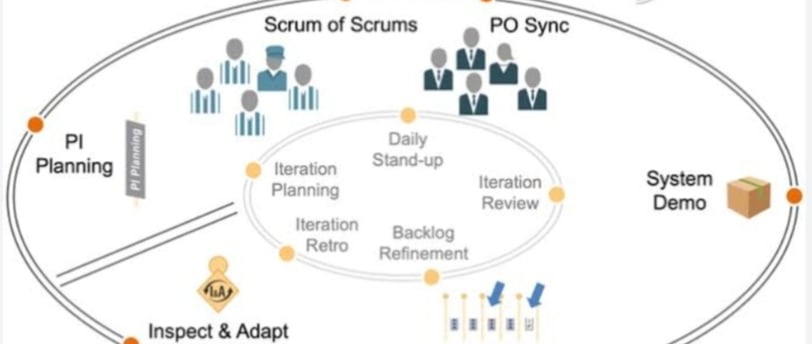The Crucial role of Release Train engineer in Scaled Agile
Roopesh Mathur, CTO AgileDevOps, Smart Management Consultancy


Release Train Engineer Facilitators Do What?
The Crucial Role of a Release Train Engineer in Scaled Agile
Introduction:
In the dynamic world of software development, the Scaled Agile Framework (SAFe) has emerged as a leading methodology to foster efficient and collaborative practices. At the core of SAFe lies the Release Train Engineer (RTE), a pivotal role responsible for orchestrating the successful delivery of value through Agile Release Trains (ARTs). In this blog post, we will explore the key responsibilities and traits of an RTE, highlighting their indispensable role in driving organizational success.
1. Definition of an RTE:
An RTE is a servant leader and coach who ensures effective execution of ARTs. They are responsible for facilitating the coordination and synchronization of multiple Agile teams working toward a common business and strategic objective. The RTE serves as a bridge between the development teams and the broader organization, helping to align the product vision, priorities, and objectives.
2. Orchestrating ART Execution:
One of the primary responsibilities of an RTE is to facilitate the planning and execution of the ARTs. They collaborate with Product Managers, Product Owners, and scrum teams to align the vision, roadmaps, and backlog priorities. An RTE fosters transparency and fosters a culture of continuous improvement by ensuring clear communication, organizing Agile ceremonies, identifying blockers, and addressing impediments promptly.
3. Ensuring Agile Principles and Values:
An RTE acts as a guardian of Agile principles and values. They guide teams in embracing the Agile mindset, implementing Lean-Agile practices, and adhering to SAFe principles. RTEs promote collaboration, innovation, and continuous learning among team members, ensuring that the Agile Manifesto is upheld throughout the organization.
4. Scaling Agile Practices:
As an organization embraces SAFe, the RTE plays a crucial role in scaling Agile practices across multiple ARTs. They facilitate regular ART synchronization events, known as Program Increment (PI) Planning, where they help to align teams, dependencies, and objectives. RTEs provide guidance in building and managing agile portfolios, conducting System Demos, and driving Inspect and Adapt workshops to identify improvements and reduce bottlenecks.
5. Coaching and Mentoring:
Effective RTEs possess strong coaching and mentoring abilities. They empower teams to become high-performing, self-organized units by fostering a culture of trust, collaboration, and autonomy. RTEs help Agile teams overcome challenges, provide guidance on best practices, and collaborate with stakeholders to identify and resolve systemic issues that hinder agility.
6. Continuous Improvement:
RTEs are relentless advocates for continuous improvement. They identify opportunities to enhance value delivery, optimize flow, and reduce waste. By leveraging data, feedback loops, and metrics, RTEs drive a culture of relentless improvement, advocating for experimentation, innovation, and adaptability
Conclusion:
In a Scaled Agile environment, the Release Train Engineer plays a vital role in orchestrating the smooth execution of Agile Release Trains. Their responsibilities span from facilitating planning and execution to scaling practices and coaching teams. An RTE's ability to drive collaboration, uphold Agile values, and foster continuous improvement is instrumental in achieving organizational success in today's complex software development landscape.
